One of the leading global conferences for the study of graphic novels and comics, the 11th International Graphic Novel and Comics Conference (IGNCC) took place online 1-3 July, hosted by the Comics Research Hub (CoRH!) at UAL’s London College of Communication, the Journal of Graphic Novels and Comics, and Studies in Comics. This virtual event welcomed a host of speakers and presenters and hundreds of visitors from all over the globe.
Titled ‘The resonance of comics: social impact and possible futures', it was a timely exploration of how graphic narratives and creators are powerfully engaging with the defining social issues of our times, and helping to visualise more hopeful futures around complex questions of identity, inequality, law and justice, medicine, education, health and politics. It also reflected on the developing narrative of comics and comics scholarship.
Highlights
Thought-provoking keynotes
Dr Golnar Nabizadeh, Lecturer in Comics Studies at the University of Dundee: Building confident life stories: Bereavement and Comics Praxis Describing a project using comics to communicate the impact of bereavement on young people aged 12–18.
Dr Pen Mendonça, graphic facilitator and cartoonist: Echoing Inequalities and Picturing Possibilities: Values-Based Cartooning in the 21st Century
Discussing graphic facilitation, the process of engagement via cartooning - and how it can be used to promote understanding, possibility and hope for those working on contemporary social issues.
Stephan Packard, Professor for Popular Culture and Its Theories at Cologne University: Transnational Imagination and the Ideology of Fiction: Picturing Cultural Others in Intercultural Comic Publications: An in-depth talk about the ways in which we understand fictional realities when they deal with different national identities.
Roger Sabin Award
The Sabin Award for Comics Scholarship is awarded annually to the best paper presented by a postgraduate student during the IGNCC conference. It recognises comics researchers at an early stage in their career and honours Roger Sabin’s work in the field of comics study. The 2020 Sabin Award winner will be announced at the start of next year.
The conference shared a recorded conversation with 2019 Sabin Award winner Shromona Das, whose paper ‘The Perfect Victim: Reading Victimhood in Rape Narratives of Indian Comics’ was presented at the 10th International Graphic Novel and Comics Conference in Manchester. Shromona discussed her paper with UAL’s Professor Roger Sabin and Dr Nina Mickwitz.
Values-based cartooning: an interview with Dr Penelope Mendonça
Independent graphic facilitator and cartoonist Dr. Pen Mendonça supports communities, organisations and leaders working on contemporary social issues here in the UK and beyond. This includes campaigns on disability rights, domestic abuse, South Asian Heritage Month, Banknotes Of Colour, and the disproportionate impact of Covid-19 on people of colour - see also the Majonzi Fund.
Her approach is defined by long and short-term partnerships, learning and co-production within a values-based cartooning process: an ethical framework, which combines visual method with dialogue and collaboration.
Pen's IGNCC keynote Echoing Inequalities and Picturing Possibilities: Values-Based Cartooning in the 21st Century references and intertwines with vital works by other artists and creators from communities impacted by inequalities, structural racism and discrimination, including the so-called Windrush Generation, British citizens who migrated from the Caribbean to Britain between 1948 and 1971 - Sharon Foster of Alicia Dean Artworks, whose work 'Trauma 1' shows the sacrifice of a mother leaving her children in the Caribbean to answer the call of employment in the motherland; Rachelle Romeo, whose work 'Identity, 2018' addresses the treatment of her father by the British government; and the campaign 'home wasn't built in a day' by Rianne Jones which represents the achievements and contributions of the Windrush generation to British culture. Also included is Sadiki Harris, whose portrait of musician Sean Rigg powerfully represents the young musician who died in police custody in London, 2008.
View the keynote presentation for references to these works and some of the many individuals, organisations and communities who are creating hope for a better future.
Here, Pen talks about her approach and the values that guide her when working on causes that are "haunted by ever-present echoes of inequality".

You highlight the often unrecognised, collective human effort going on in communities to address injustices and make us better as a society. Why is it useful to have artists working with communities as part of their process for dealing with difficult issues?
"Who do we mean when we talk about ‘artists’? So many of those who encounter injustice, who live with, highlight and address inequalities, use the arts as a way to explore, share, educate and influence change. These artists engage with and convey the human experience and emotions that are so often sucked out of policy, professional, academic and news reports.
Society has always benefited from the creativity and culture that exists within minoritized groups, this has not always been recognised. That is not to say that artists from outside of these communities can’t also have a role, they can listen, research, share skills and perspectives, make work, potentially reach new audiences.
As you can see from the examples included here, this kind of work is about trying to represent and connect peoples experiences, voices and ideas, their art, scholarship, vision and imagination, within a particular moment, landscape, social and/or political context. What artists looking to collaborate must not do, is assume that our art is more important than the art that already exists within these spaces.
Work that inspires me: Women of the Windrush, is a deeply spiritual and powerful piece by the composer, artistic director and activist Shirley J Thompson, it is an incredible example of art being used as a way to explore, share, educate and influence change. Likewise, disabled/visual artist Tanya Raabe-Webber’s contemporary portraiture practice brings new perspectives and narratives to light, while Lizzie Emeh’s music and performances feed the soul, reminding us of the pioneering leadership and talent within learning disability arts. These artists are deeply invested in addressing inequalities, they work alongside others with a sense of purpose and a generosity of spirit."
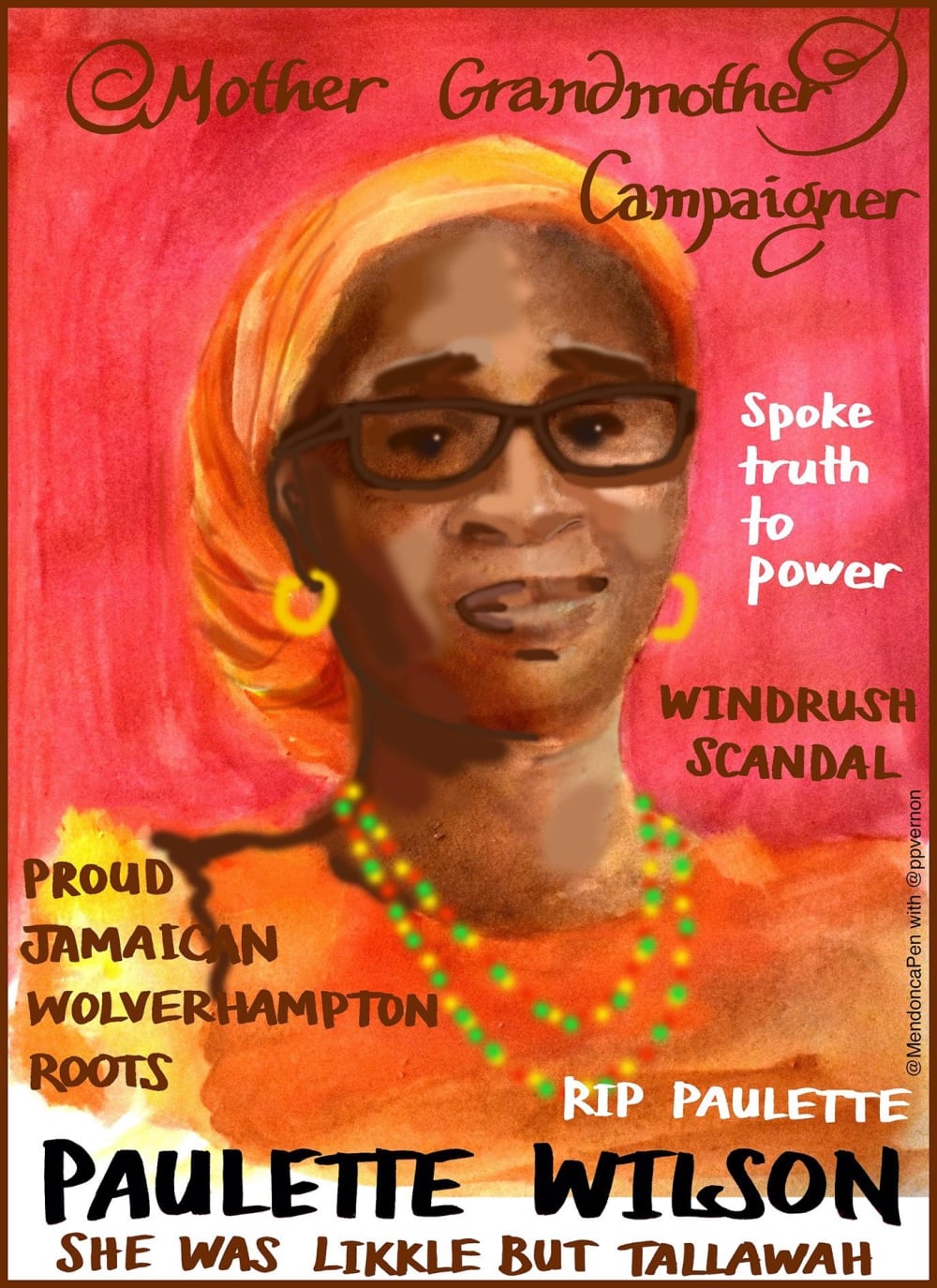
In your role, you observe the very real dichotomy of social issues: the difficult facts, painful experiences and human cost and the positivity, possibility and hope that co-exists thanks to those working within communities to tackle these issues. Why is it important to acknowledge both sides?
"Individuals from minoritized and marginalised groups have historically been ‘othered’ through a deficit-based lens, seen as less human, less intelligent, burdens, undeserving, perhaps dangerous, or ‘infected’, vulnerable, not contributing. Older and disabled people, Black people, refugees, minoritized religious groups, young single mothers, ex-offenders, travellers, to name just a few.
When we think about the people we know and love, who love and support us, we understand how inaccurate, patronising and deeply harmful it is to focus on what Chimamanda Ngozi Adichie calls ‘the single story’.
We need to commission new work which shows how austerity, structural discrimination, racism and microaggression impacts on people’s everyday lives. But which also reflects people’s agency, their desire to improve the world for others, the way whānau, communities and organisations come together around their own solutions. Artists, researchers and activists can help make strengths, achievements and leadership more visible.
The portrait here is of the late Paulette Wilson 'The Windrush Champion', who was detained in an immigration removal centre and threatened with deportation in 2017, despite having lived in Britain since arriving legally in 1948. Paulette was much loved and respected by her community in Wolverhampton, and by all those she inspired to stand together against injustice. For examples of other Great Black Britons see Dr Patrick Vernon OBE and Dr Angelina Osborne’s 17 year campaign and recently published book by the same name: 100 Great Black Britons."

You describe the process of listening to and engaging with multiple lived experiences of an issue. Can you talk about how this informs your work?
"In recent years there has been a huge demand for women writers and artists to tell personal stories of trauma and loss. Autobiographical graphic novels by women and LGBTQ+ creators offer us new perspectives and powerful stories - for scholarship on this topic see: Dr Monalesia Earle; Dr Nicola Streeten and Professor Hilary Chute.
But we also need to find ways to show how inequalities and structural discrimination can impact on individuals and communities in vastly different ways. The recent Bank of England Monetary Policy Report chart showed how lower income households are drawing down their savings during the pandemic, while higher income households are building theirs up. It has been people without secure employment, older people, those with dementia, disabled people of all ages and people of colour who have been disproportionately impacted by Covid-19. While Covid-19 and austerity have devastated lives, many of us remain well off economically, yet there is at times, a perception that our experiences of the pandemic are alike, as if ‘we are all in this together’.
My PhD research examined single pregnancy and early single motherhood through values-based cartooning. Focusing solely on personal experience, or published autobiographical graphic narratives, may have undermined the stories and perspectives of single women that continue to be ignored, perhaps led to a more limited picture, masking the way women’s experiences may be shared, but also vary.
There is a real opportunity at this moment for artists to work with multiple lived experiences of the issues they are exploring, even if they have personal experience of it themselves."

As an artist and individual, how do you value the opportunity to help retell history from perspectives that may have been hidden?
"I grew up in Christchurch, (Ōtautahi), New Zealand (Aotearoa), in a loving, mixed heritage, intergenerational home that included someone with dementia. I learnt about the British Empire, the partition of India (1947) and the transatlantic slave trade at home, not school. I learnt about disability history because I worked with disabled people. I learnt more about the impact of policy on people’s lives because I worked as a cleaner in a hospital, a support worker in care homes and advocacy groups, a manager in a mental health service.
Thanks to privilege (including white privilege), timing and good luck, I got to live in different countries and cultures. Along the way I met heroes, villains, and some people who turned out to be both. I failed, succeeded, failed again, made and consumed art, laughed, loved and lost. I became a mother while single, experienced violence and kindness, had moments of brilliance, and utter stupidity.
Like others, I became frustrated and frankly, bored, with only seeing certain kinds of lives, bodies, childhoods, relationships, leadership and art acknowledged and idealised within mainstream media, classrooms, children’s books, games and animation, academic texts and the art world. Thankfully, this is changing - for examples Letterbox Library, BAMEed and Diverse Histories + Oska Bright, Autograph, but there is so much more to be done by all of us.
Our experiences inform our practice, but we can make up for our limited knowledge and lens by learning from friends and colleagues, from elders, from the writers, comedians, film makers, photographers, cartoonists and musicians bringing light to forgotten narratives. Here I would like to mention Michael Ohajuru and Miranda Kauffman whose research into the Black Tudors includes Henry VIII trumpeter John Blanke who features in some of my work. We can also learn from those who can’t access the internet, those who communicate non-verbally, those who may be excluded, living in poverty, or fear.
Researching and telling stories that haven’t been amplified, drawing lives that aren’t being drawn, that are full of nuance, accomplishment and hope as well as struggle, can help us question our prejudice, break down unhelpful stereotypes, invite to us make new connections, and show us how investing in a more equal society, brings benefits to all of us."
You deal with questions of power and ethics in your work. Can you tell us a bit more about navigating the complexity of what to record when graphically facilitating events?
"Facilitation is first and foremost, about supporting people, whether or not visuals, or indeed the arts, are useful in that moment, depends on the context and timing. When dealing with questions of power and ethics it is necessary to consider the purpose of any method, whether that be verbatim theatre, sculpture, comics workshops, or graphic facilitation.
Employing visual or other creative methods is often assumed to be inherently ‘good’, but who is it good for, under what circumstances, and why? If the sole aim is to publicise an organisation, then we need to be honest about that. If the aim is to facilitate and record discussion around difficult topics, then agreeing underpinning values, how the process will work, how the space will be made safe, how and when visuals will be shared (or not), means the artist and the organisation have a guide to work to, and some accountability to participants. Ethical frameworks such as values-based cartooning can help those commissioning, undertaking and participating. This is especially important in the age of social media."
"I would like to acknowledge the support of University of the Arts London, particularly the Comics Research Hub at the London College of Communication and Professor Roger Sabin. I would also like to thank Dr Patrick Vernon OBE, whom I collaborated with on much of the work included here."
www.penmendonca.com Twitter @MendoncaPen Insta: @penmendonca
All of the conference materials including keynotes and workshops can be found on the conference website.
Main image: Black and Ethnic Minorities on the Front Line, Pen Mendonça with the UBELE Initiative and Dr. Patrick Vernon, 2020
Related images
-
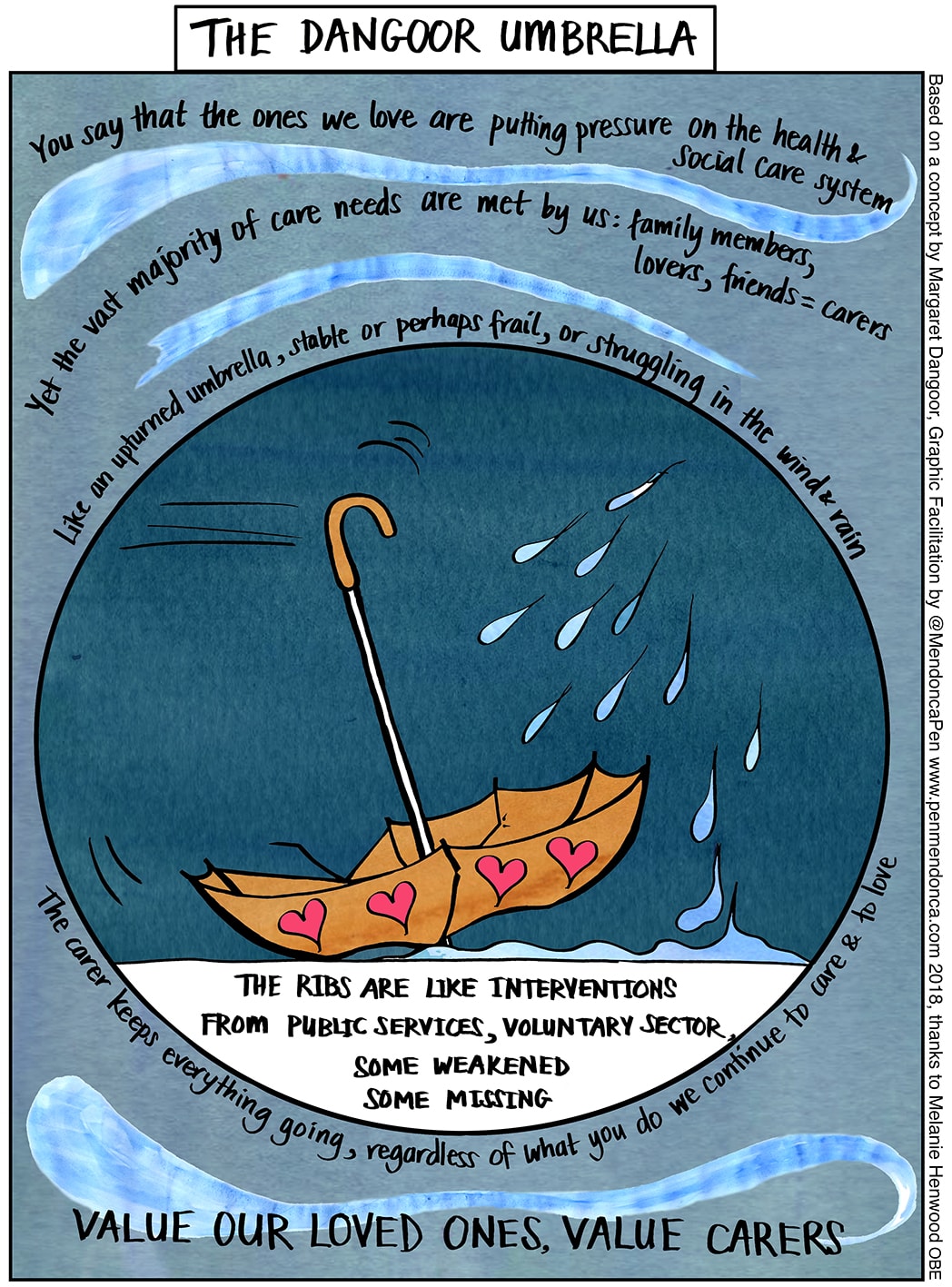
The Dangoor Umbrella, Pen Mendonça with Margaret Dangoor and Dr Melanie Henwood, 2018
-
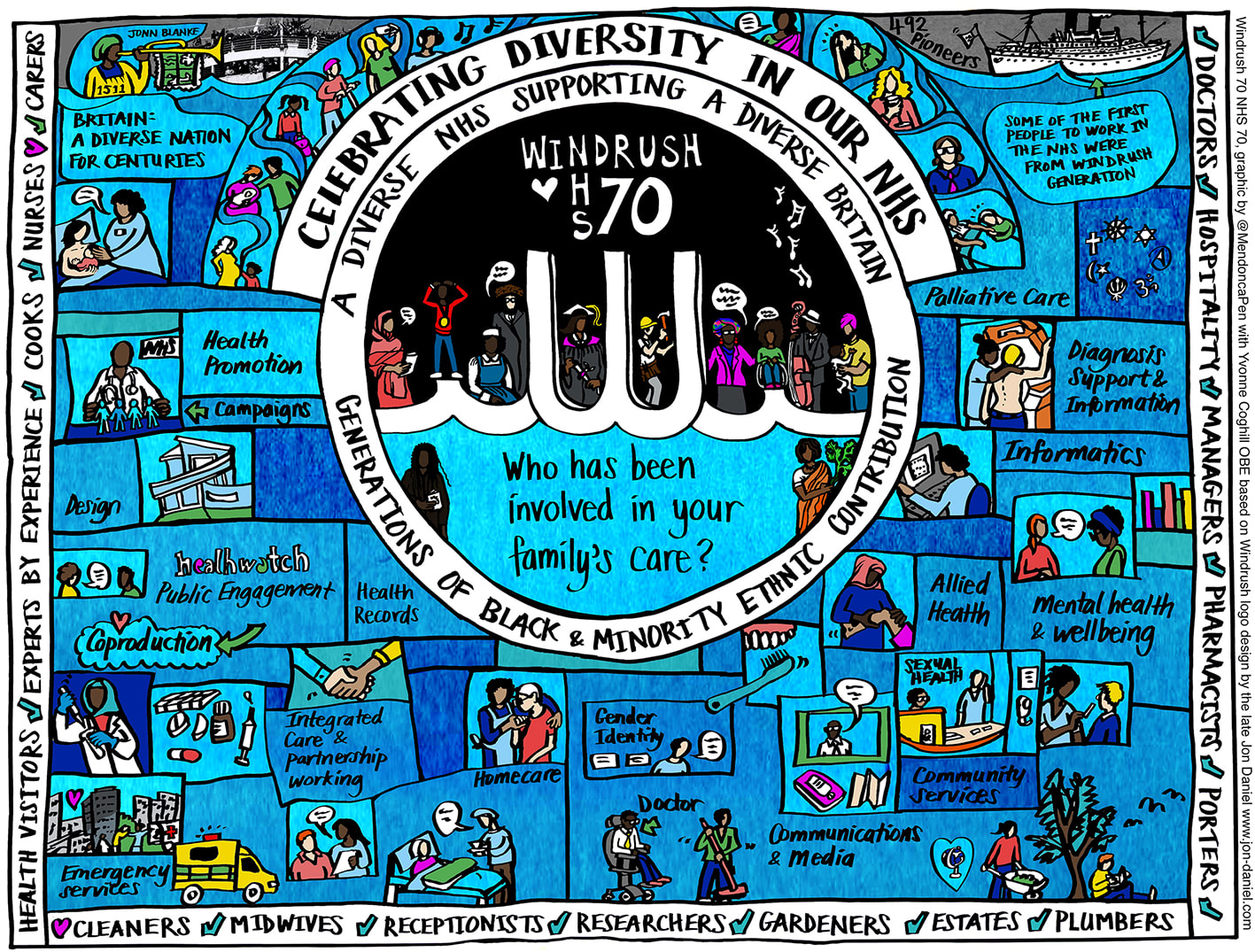
Celebrating Diversity In Our NHS, NHS70 and Windrush70, Pen Mendonça with Yvonne Coghill CBE, 2018
-
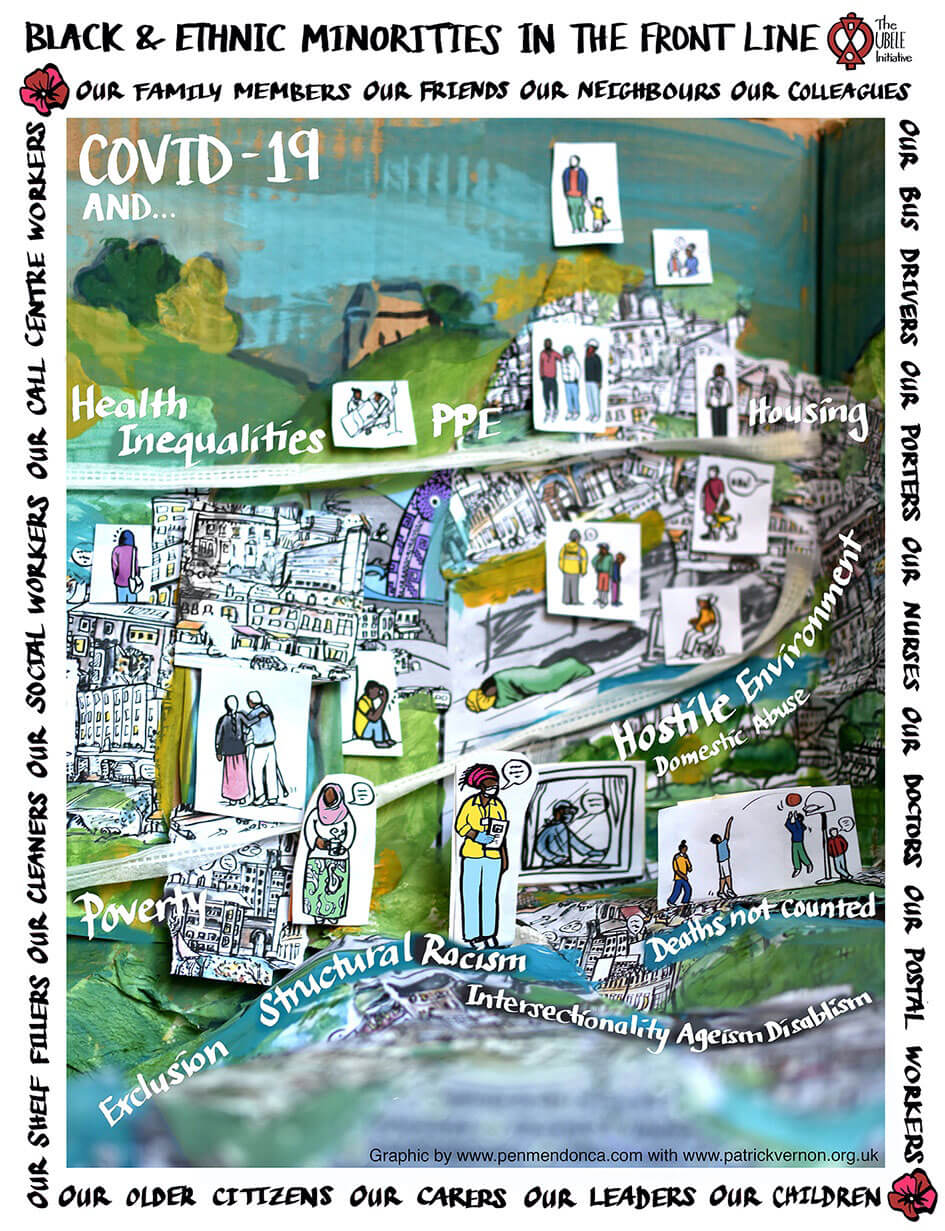
Black and Ethnic Minorities on the Front Line, Pen Mendonça with the Ubele Initiative and Dr Patrick Vernon, 2020
-
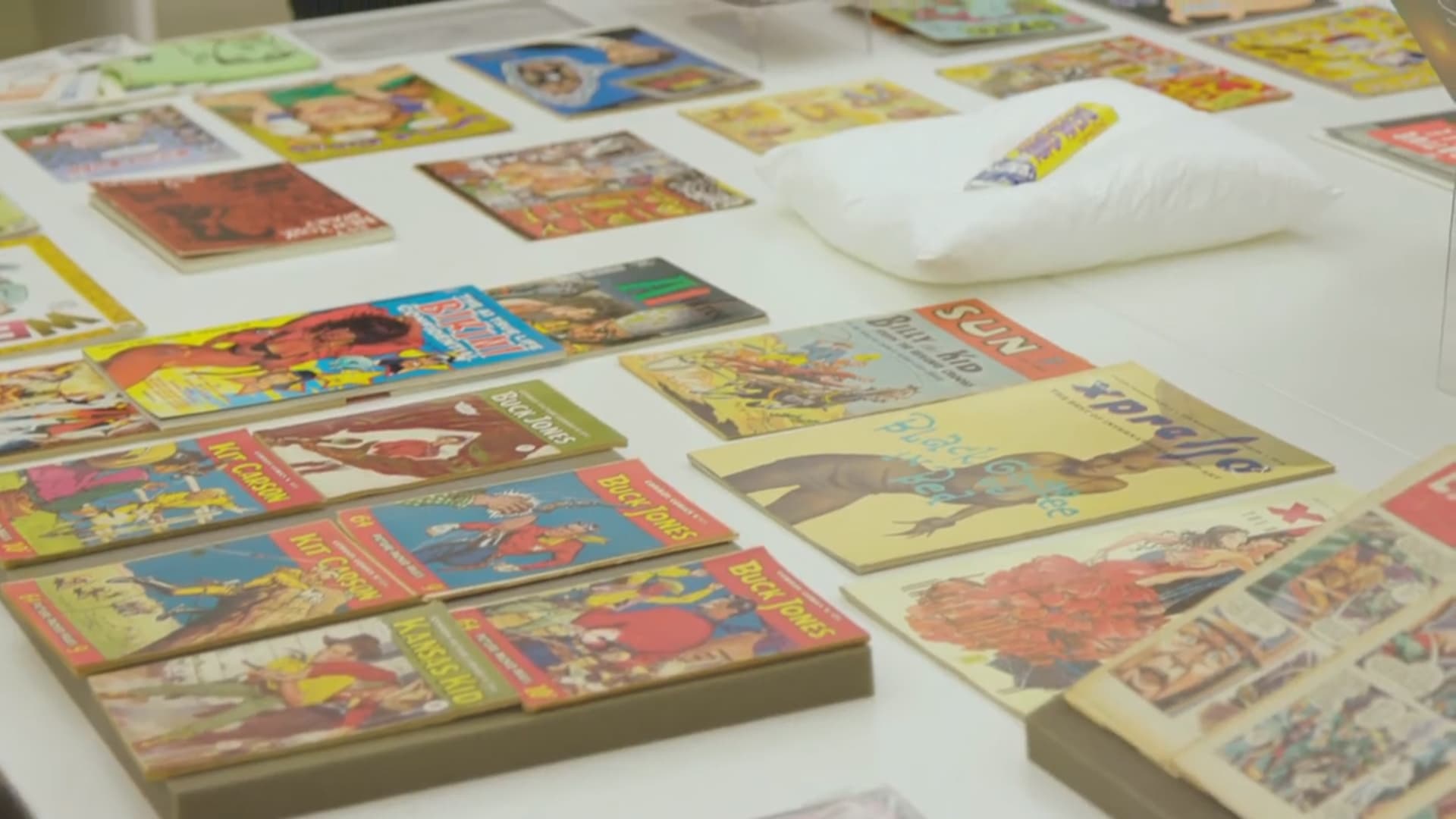
Image courtesy of Comics Research Hub, UAL
-
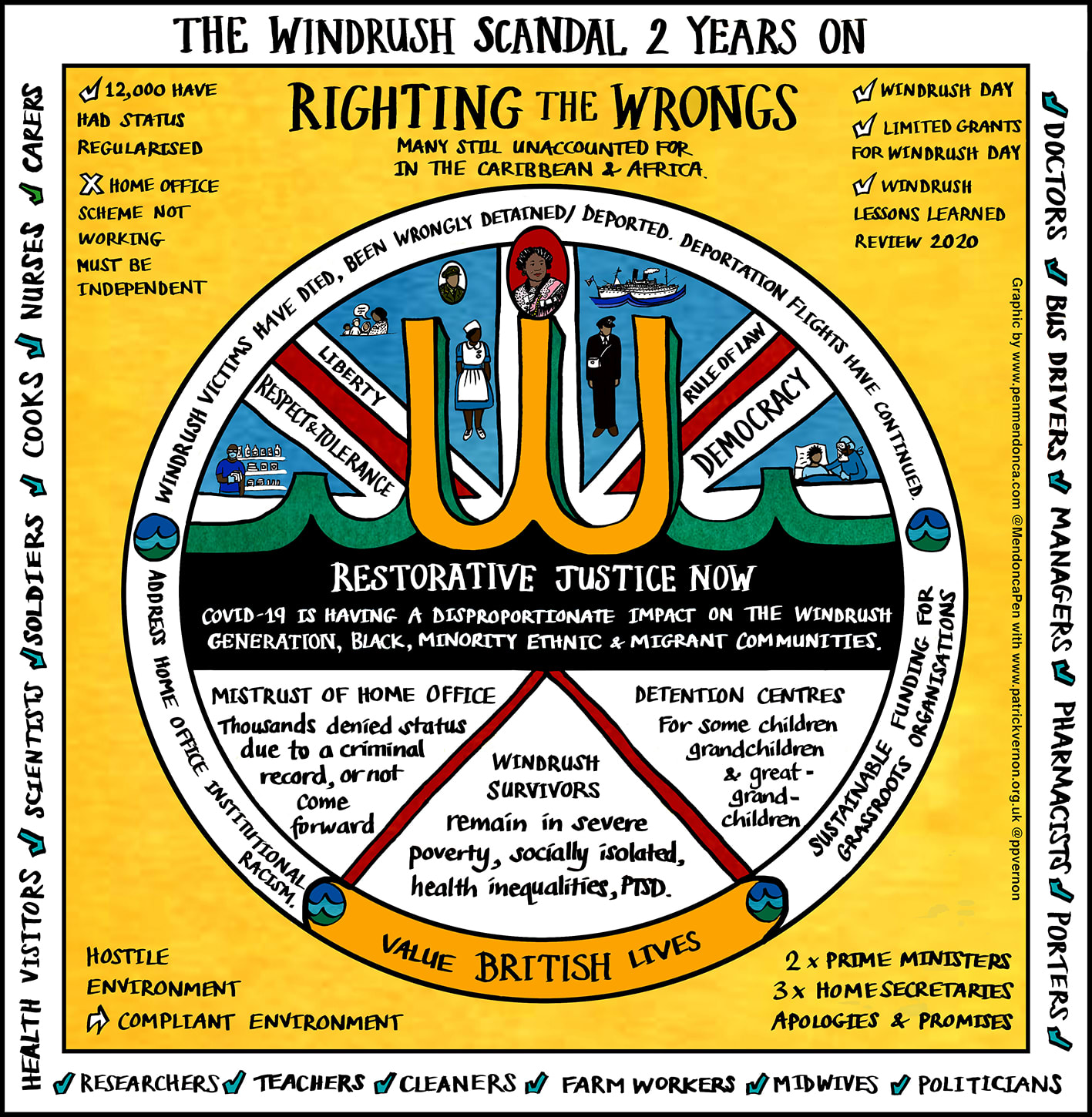
The graphic held by Windrush campaigners in the adjacent photo: The Windrush Scandal Two Years On: Righting the Wrongs. Pen Mendonça with Patrick Vernon.
-
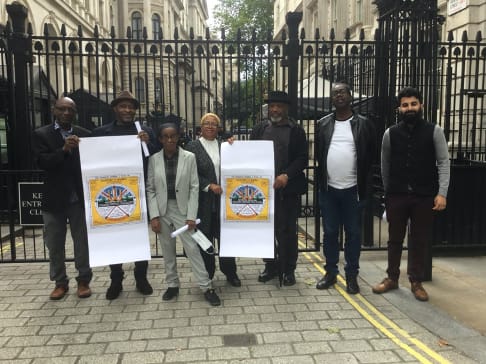
Paulette Wilson with Patrick Vernon and other Windrush campaigners, outside Downing Street, June 2020

